Allison Katz
Dry Goods
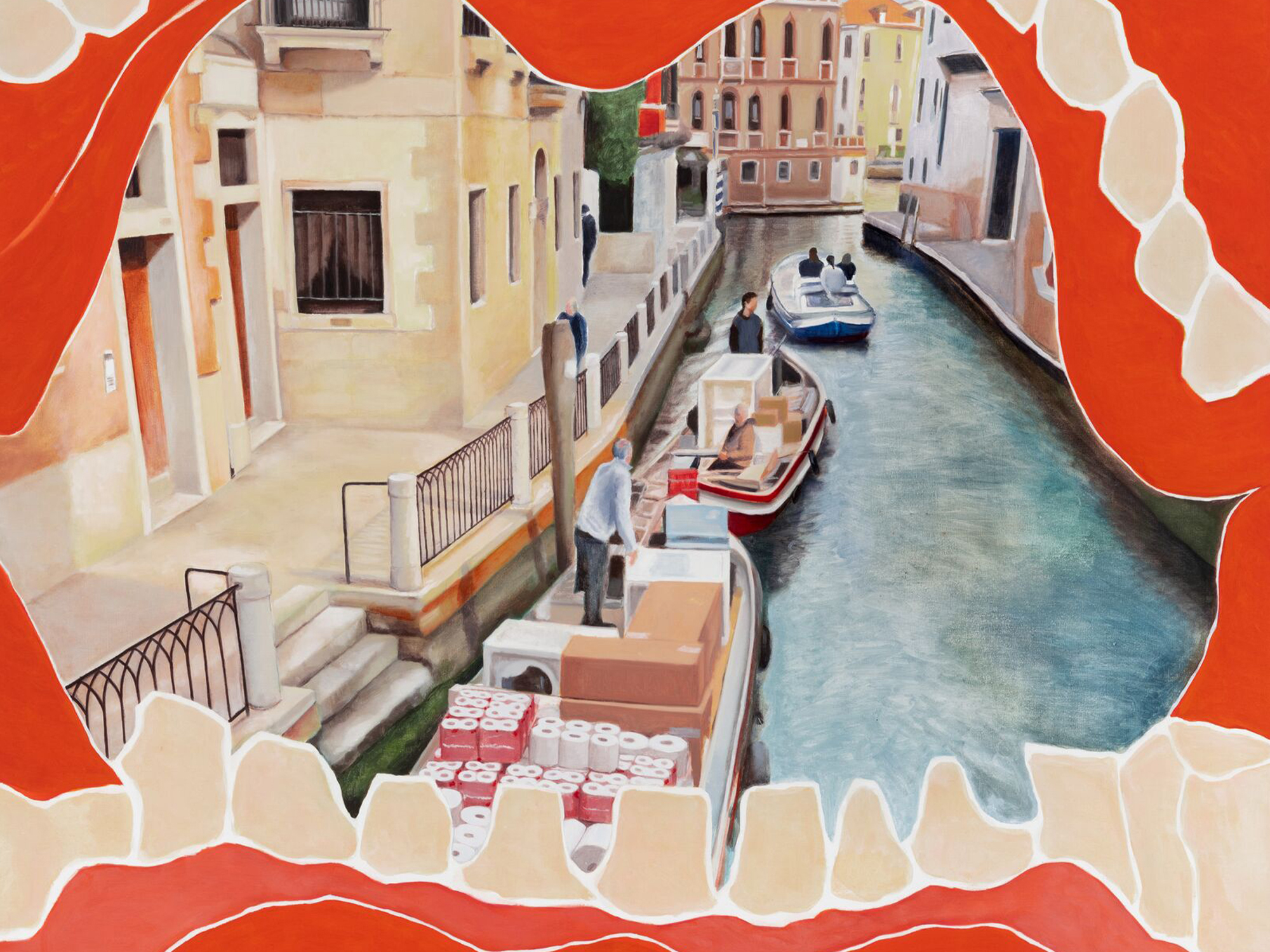
For over a decade, Katz has investigated the ways in which aesthetic practices link and absorb autobiography, commodity culture, information systems and art history, using a diverse lexicon of imagery and recurring motifs. Her practice has a complex relationship with the tactile world, engaging with the idea of the viewer as both subject and participant. It is through the act of revisiting, copying, transforming and reshaping these motifs that the artist creates a lineage and continuity from one work to another, informing and connecting with each new appearance.
‘I am attracted to images insofar as they can communicate a surplus of meaning. I like the contradiction of using a fixed surface to infer that the premise is inexhaustible.’—Allison Katz
Katz’s interest in framing as both motif and subtext is a formal technique that investigates questions of identity and voice. The frame becomes a portal for making sense of the world. The windows and mouths that frequently appear in her paintings address a duality between the sensual and intellectual consumption of information, and synthesize different kinds of physical experience, such as taste and sight.

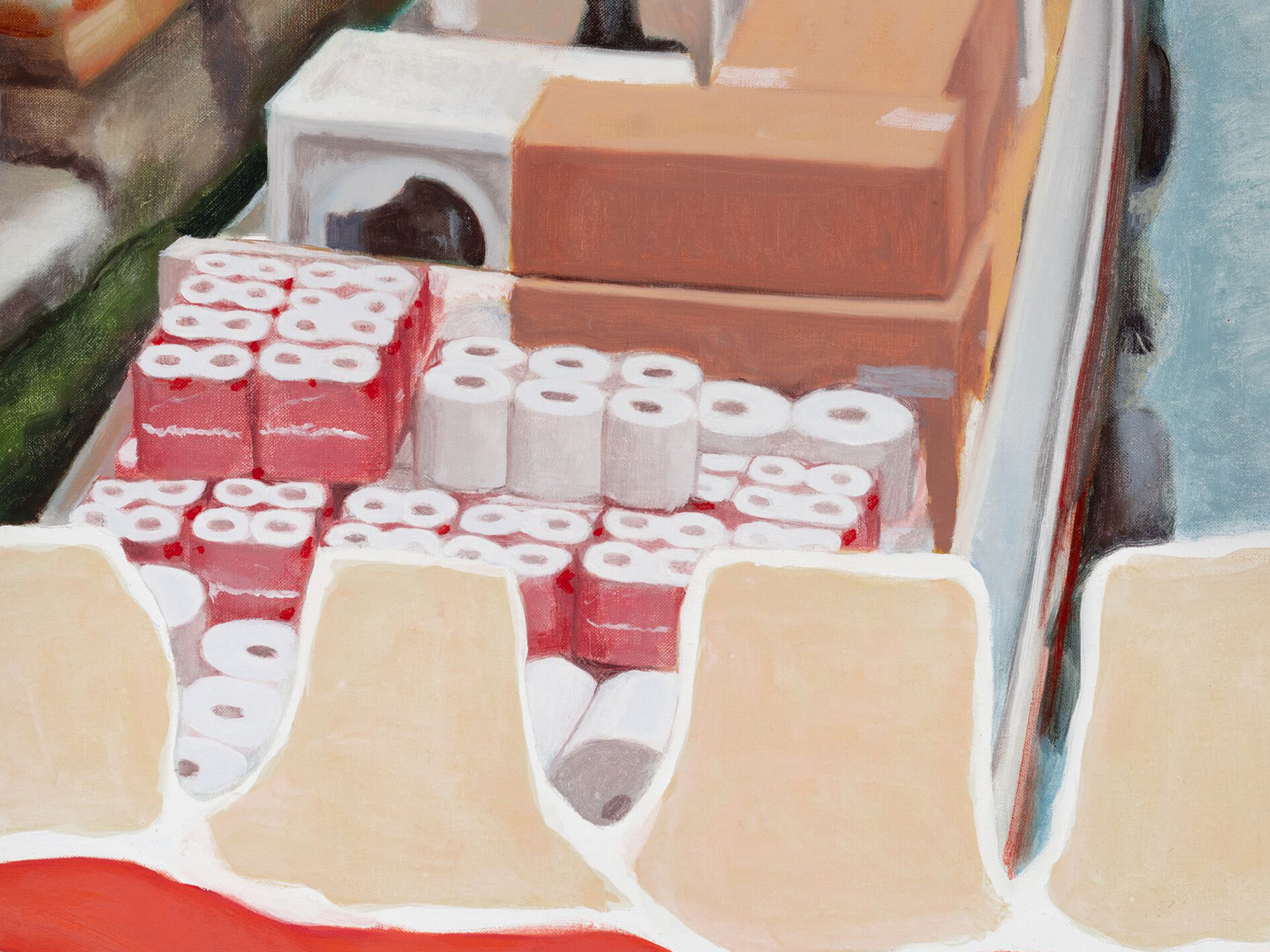
‘Dry Goods’ (2022) is part of an ongoing series of mouth paintings that are inspired by a small woodcut made by André Derain in 1943 as part of an illustrated book of François Rabelais’ Pantagruel. The reproduction of this open-mouthed perspective is scaled up to Katz’s own height, transposing the intimate scale to one that is larger-than-life. This visceral and arresting framing device thus challenges the diverse scenes and ambiguous imagery revealed within, such as the quotidian view of Venice seen here.
Katz’s use of the mouth as a frame of perspective is both literal and metaphorical. The frame is activated by ideas of taste, hunger, language, consumption, instinct and desire. An inner experience of the outer world is united and flattened by the picture plane; two alternate realities interface in the liminal space of painting, each affecting the impact and registration of the other. The jagged teeth, the pinks and reds of lips, gums and palate sit incongruously around the view at the center. The ambiguity of the imagery makes sense only when the viewer repositions themselves at the heart of the painting—from the bodily perspective of the mouth—thus offering new readings of the world around us.

‘Identity is a relation, from the point of view of both language and the gut – the gut so that we understand that consumption and taste are built in. Out of the corner of my eye I can see the end of my nose, the purse of my lips. I cannot outrun my perspective, so I make it the frame.’—Allison Katz




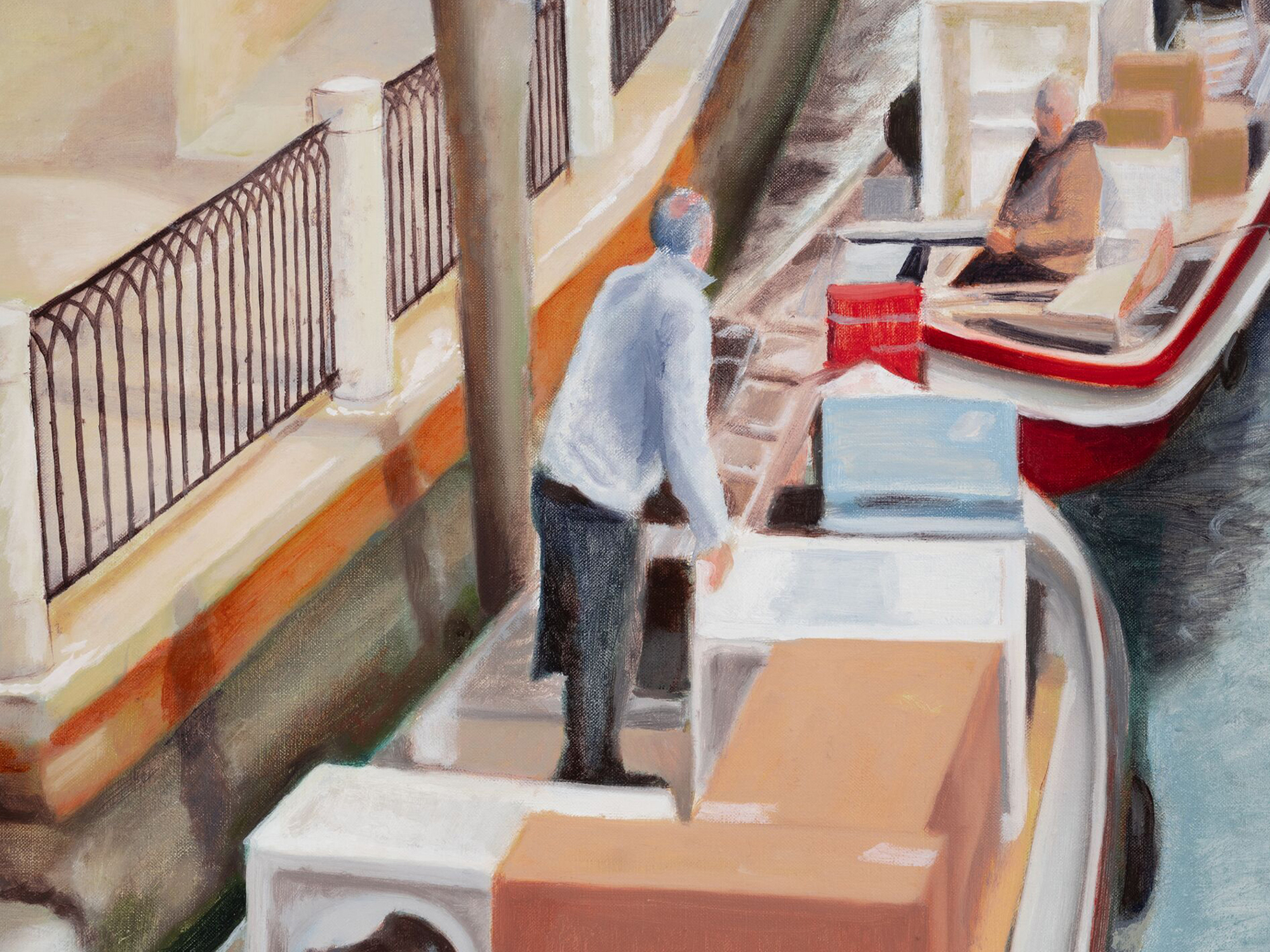
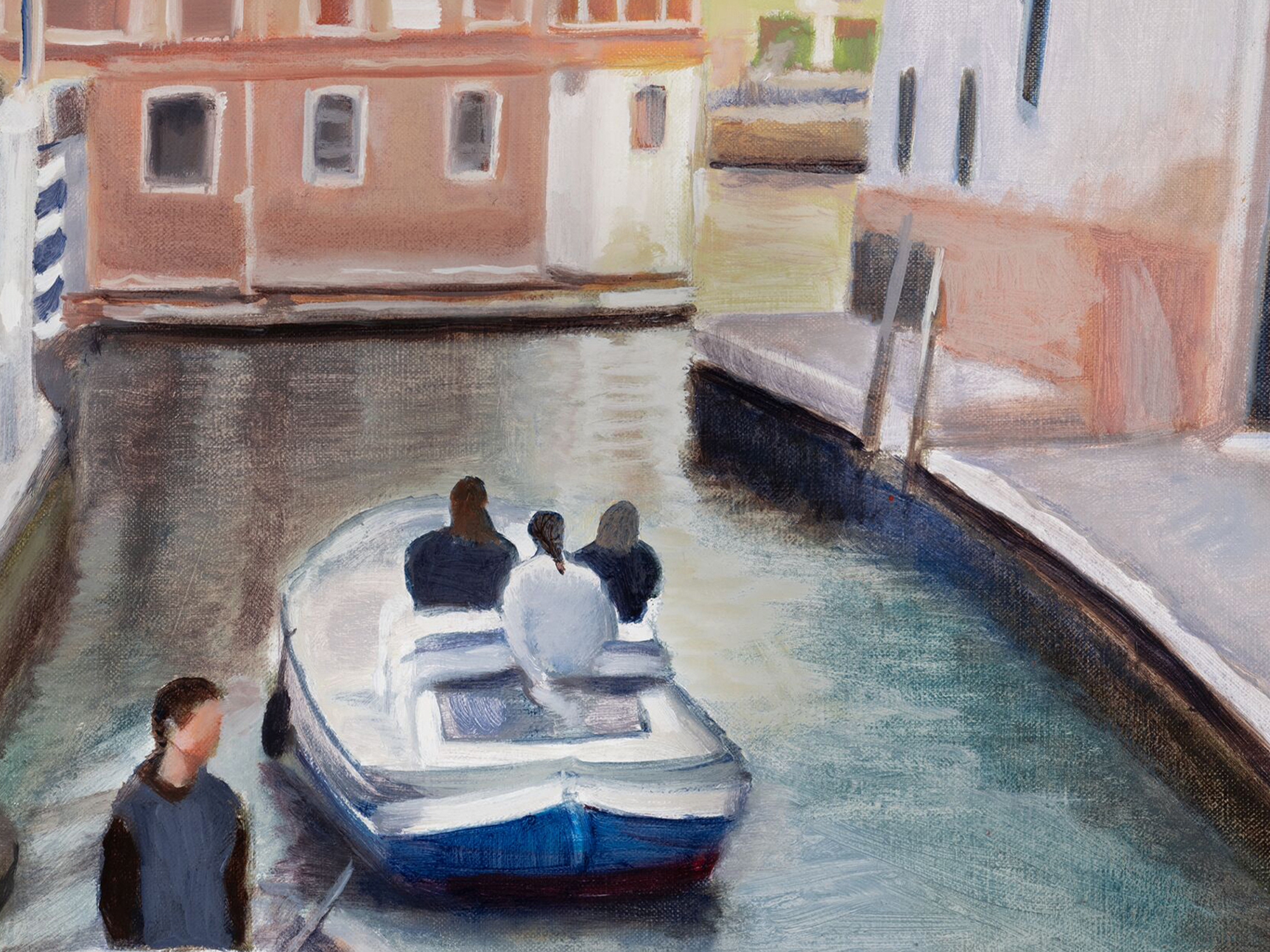
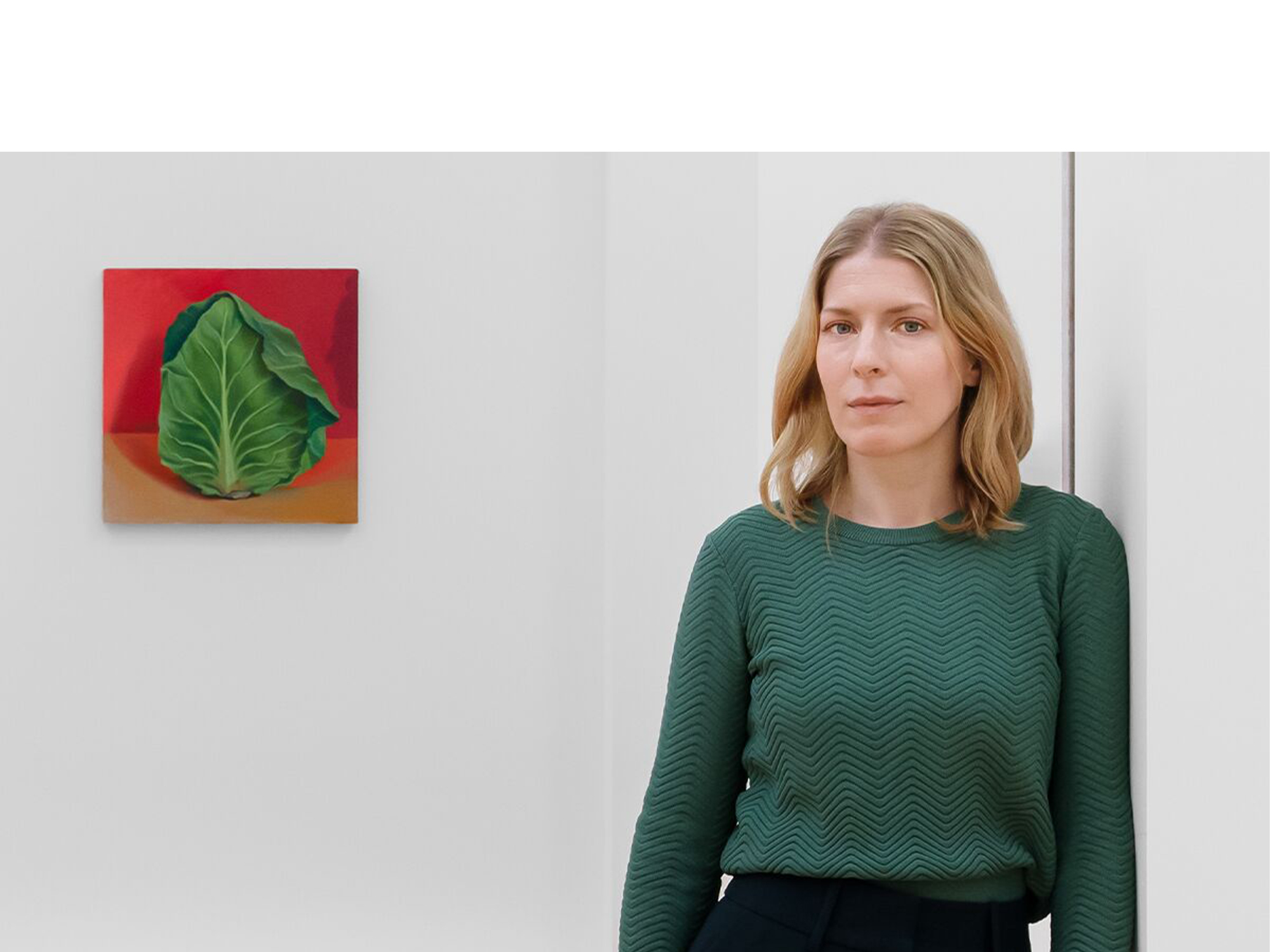 For over a decade, Katz has investigated the ways in which aesthetic practices link and absorb autobiography, commodity culture, information systems and art history. Her diverse imagery, including cocks, cabbages, mouths, fairies, elevators, noses, waterways, and variations on her own name, appear as recurring symbols and icons which build an unending constellation of ideas and references. Images transmute across the media of painting, posters, ceramics and installations. It is through this act of returning to, copying, transforming and reshaping motifs that the artist creates a lineage and continuity from one work to another, informing and connecting the totality with each new appearance. ‘I paint like I write, that is, I build around quotes, which is a conversation, in effect,’ says Katz. Her subjects are united by a curiosity for how an image passes through embodied experience, while its elasticity of meaning is shaped by impersonal, cultural conditions through time. In this way her work addresses the ambiguity of subjectivity and its presentation.
For over a decade, Katz has investigated the ways in which aesthetic practices link and absorb autobiography, commodity culture, information systems and art history. Her diverse imagery, including cocks, cabbages, mouths, fairies, elevators, noses, waterways, and variations on her own name, appear as recurring symbols and icons which build an unending constellation of ideas and references. Images transmute across the media of painting, posters, ceramics and installations. It is through this act of returning to, copying, transforming and reshaping motifs that the artist creates a lineage and continuity from one work to another, informing and connecting the totality with each new appearance. ‘I paint like I write, that is, I build around quotes, which is a conversation, in effect,’ says Katz. Her subjects are united by a curiosity for how an image passes through embodied experience, while its elasticity of meaning is shaped by impersonal, cultural conditions through time. In this way her work addresses the ambiguity of subjectivity and its presentation.